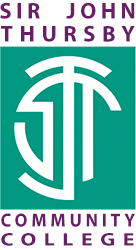Topic 6 Year 7 Mathematics
| Mathematics | |||
| Topic | Expressions, equations and inequalities | ||
| No of lessons | 12 | ||
| When is it happening | Term 1 Year 7 week 9-11 | ||
| Key Knowledge that students should know at the end of 'Topic' | This is the knowledge that students will meet for the first time in this topic |
In this unit, students use algebraic notation to express the multiples of integers and see collecting like terms as a development of the distributive property. Students first use a range of representations and contexts including Cuisenaire rods, bar models, number pyramids to manipulate expressions into their simplest form as well as representing equality statements. Seen alongside ‘tracking calculations’, students will develop flexibility in expressing relationships algebraically as well as being comfortable substituting constant values for variables. Once familiarity with this notation system has been developed, students will explore representations of equality, and understand the preservation of equality in written equations. This will then lead to exploration of inequalities utilising bar models and algebraic coding of perimeter as a problem-solving context. Finally, students will explore tracking calculations for counting strategies in growing dot patterns as another context for generalisation, introducing the foundation for later study of sequences. |
|
| This is knowledge that students may have met before but will need to deepen their understanding |
Substitute variables to evaluate simple expressions. Understand the algebraic notation of multiplication. Collecting together like terms using tracking arithmetic and algebra. Manipulating linear expressions involving multiple variables. Using the distributive property to ‘expand brackets’ with linear expressions. An introduction to factorising basic linear expressions. Introducing the concept of an equation. Using Cuisenaire Rods or bar models to form equations. Form equations related to a known equation. Explore how equality is preserved. (i.e. balancing) Using Cuisenaire Rods or bar models to form inequalities. Form inequalities related to a known equation. Forming expressions using algebraic lengths specified on a grid Drawing shape given expressions for the perimeter Forming expressions using algebraic lengths specified on a grid. Establishing inequalities from perimeter expressions. Generalising counting strategies algebraically for repeating patterns. Generalising counting strategies algebraically for different repeating patterns. |
||
| Key Skills that students should be able to demonstrate at the end of 'Topic' | This is the skills that students will meet for the first time in this topic |
Representing numbers with variables. Understanding the order of operation Understanding and using distributivity Familiarity with basic algebraic notation Using brackets and the order of operations Simple algebraic notation Simple manipulation of linear algebraic expressions Identifying factors and multiples Representing variables using letters Simple algebraic manipulation Forming simple equations with appropriate models Simple algebraic manipulation Forming simple equations with appropriate models Preserving equality in simple linear equations Inequality and simple algebraic notation Modelling inequality and equality statements Basic algebraic manipulation Understanding of perimeter as a length Reading and writing algebraic inequalities Understanding of perimeter as a length Reading and writing the order of operations in written expressions Using letters as variables Reading and writing the order of operations in written expressions |
|
| This is skills that students may have met before but will need to develop |
Understand that algebra is used to express mathematical structures, and Be able to substitute (into), simplify, expand, and factorize algebraic Be able to manipulate equations and inequalities to form new equations Be able to form expressions and inequalities in a new context Be able to simplify and manipulate algebra in a new context |
||
| Key vocabulary that students should know and understand |
Experience generalizing patterns and how algebra can be used to represent them |
||
| The Big Question |
Factorize Expand Variable |
||
|
Key questions that students should be able to answer at the end of the 'Topic'
|
Can I differentiate the methods of factoring, expanding, substitution, creating equations and using inequality symbols to create inequalities? | ||
| Can I substitute values into linear equations? | |||
| Can I simplify equations using the like term method? | |||
| Can I expand single bracket expressions? | |||
| Can I factorise linear equations? | |||
| Can I form equations from a diagram? | |||
| Can I identify a balanced equation using diagrams? | |||
|
Can I use the inequality symbols to express an inequality. |
|||
| Can I use the inequality symbols to express and form inequalities with unknowns? | |||
|
Can I express perimeter of a polygon shape into an expression which has unknown values? |
|||
|
Can I express perimeter of a polygon shape into an inequality which has unknown values? |
|||
| Given the grouping strategy, can I write a tracking calculation to express the given number of dots in a chain? | |||
| Can I create and compare the grouping strategies and use this to calculate and compare the number of dots in a given chain? | |||
